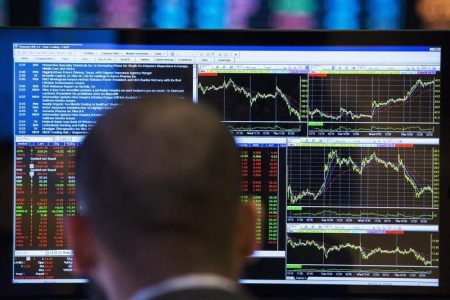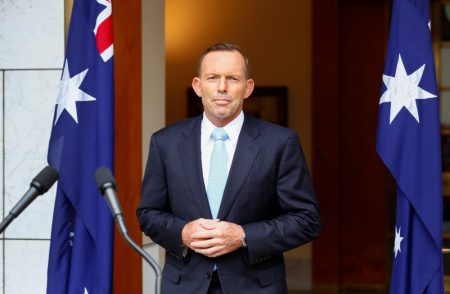By Paritosh Bansal
(Reuters) -A proposal by global regulators to change how the largest banks report key risk metrics at the end of the year could deal a blow to their U.S. short-term funding businesses, the latest salvo in a battle over tighter capital rules.
The largest global banks are required to hold more capital than others, with a surcharge calculated every year from Dec. 31 values of a set of risk measures. In a bid to reduce the capital hit, which hurts profitability, some banks adjust businesses at year-end to lower those numbers, a tactic called window dressing.
JPMorgan Chase (NYSE:) and Bank of America, for example, reported lower risk measures at the end of last year than they were earlier in 2023, avoiding what would have been an additional surcharge of more than $8 billion each, according to Reuters calculations of risk metric scores.
Last week, the Basel Committee on Banking Supervision, a global watchdog, cracked down on window dressing. It proposed that banks use the average of values over the reporting year for most of these risk metrics, rather than the year-end snapshots. In making the proposal, the committee joined the U.S. Federal Reserve, which proposed a similar move a few months ago.
While window dressing is a well-known phenomenon, the mechanics of the practice are complex, with multiple factors affecting banks’ decisions. A closer examination of how JPMorgan and Bank of America lowered one of the risk measures provides fresh insights about some of the factors at play and the potential impact of the proposed change.
In this example, the measure is affected in part by the banks’ activity in the repurchase agreements, or repo, market, in which investors borrow against Treasuries and other collateral for the short term.
Interviews with banking sources and a review of bank disclosures show daily averaging would make it harder for the biggest banks to make money from the U.S. repo business, while raising costs for participants such as foreign hedge funds.
That could impact Treasury markets, where the lack of market makers during times of stress has been a problem, and make it more costly for the government to issue debt, one of the banking sources said.
The proposal also has broader benefits, however, these conversations show. Any move toward data that better captures activity through the year would bolster global financial stability by giving regulators a more accurate picture of banks’ risk profile. It would also likely smooth out functioning in repo, where rates tend to rise at year-end because of window dressing.
The tweak to the way the capital surcharge is calculated is among a slew of regulatory measures in recent months that seek to tighten capital rules and improve market resiliency. Some proposals have drawn fierce push-back from the industry, leading the Fed to rethink them. The Basel committee’s proposal is in its comment period.
It remains to be seen whether the changes will go through as proposed, with banks arguing for measures that rely on month-end or quarter-end figures instead of daily averages. JPMorgan has, for example, supported the move to “averaging on a conceptual basis” but called daily averaging unnecessary.
Banks have also raised broader issues with the way the surcharge is measured, including saying that it doesn’t account for economic growth, which inflates the capital requirements without a change in their risk profile.
Pushing back against any implication that banks try to manipulate the numbers, one of the banking sources said many variables are outside their control. A rising stock price, for example, increases one of the risk measures. Lower numbers on Dec. 31 also reflect year-end slowdown in activity as people go away for the holidays, the source said.
BIG SURCHARGES
Regulators created the GSIB score, a reference to global systemically important banks, after the 2008 financial crisis to prevent the failure of a major bank from causing broader problems. A bank’s score determines how much additional capital – called the GSIB surcharge – it must hold to absorb losses. The surcharge increases by 0.5% each time the score crosses a threshold.
While the GSIB surcharge is calculated based on the Dec. 31 score, U.S. banks report the risk numbers every quarter. Reuters calculated the GSIB scores for all eight U.S. banks that fall in that category for each quarter in 2023.
The calculations show that in the second and third quarter JPMorgan’s score would have put its surcharge at 5%, but it lowered the score enough by Dec. 31 to hit the lower level at 4.5%. Bank of America breached the 3.5% surcharge level in the third quarter but brought the score down to end the year comfortably at 3%.
A 0.5% surcharge equals more than $8 billion for each of the two largest U.S. lenders.
GSIB scores fluctuated last year for other U.S. banks, too, but not enough to impact their surcharge levels.
Non-U.S. banks employ window dressing as well, but differences in publicly available data and methodology make it impossible to do the same calculations for them. Their methodology also leads to lower scores than the one used for U.S. banks. In the case of Bank of America, for example, the international method would have led to a 2% surcharge, one of the banking sources said.
REPO MARKET
One source of change in the scores at both JPMorgan and Bank of America is in the metrics for cross-jurisdictional claims and liabilities, which measure the scale of their global activities, the calculations show.
An example of that activity is repo between the banks and entities such as hedge funds based outside the country, according to two of the banking sources.
U.S. banks lower the scores by moving those trades to the Fixed Income Clearing Corp, the central clearing agency, which becomes the domestic go-between, reducing the cross-jurisdictional risk measure, the sources said.
The trades are cleared through a process called sponsoring. Both JPMorgan and Bank of America saw sponsored repo rise at year-end. JPMorgan’s exchange and clearing house guarantees and commitments, which include sponsored repo exposure, rose to $265.9 billion at year-end, versus $118 billion in the third quarter. Bank of America’s sponsored repo exposure rose to $132.5 billion from $43.6 billion.
Not all of the increase may be linked to year-end adjustments. In a statement, Bank of America said, “The industry continues to see increased client interest in these transactions given emerging rules and regulations.”
Moving business to the sponsored repo market can be a costly prospect for the largest banks, which prefer to do business bilaterally with clients.
With daily averaging, these banks’ activity throughout the year – and not just at year-end – will determine the GSIB score, so they will not be able to take on more risk during the year without attracting higher capital or sponsoring costs.
That would leave banks with the choice of either passing costs to customers or getting smaller, one of the sources said.
Read the full article here









